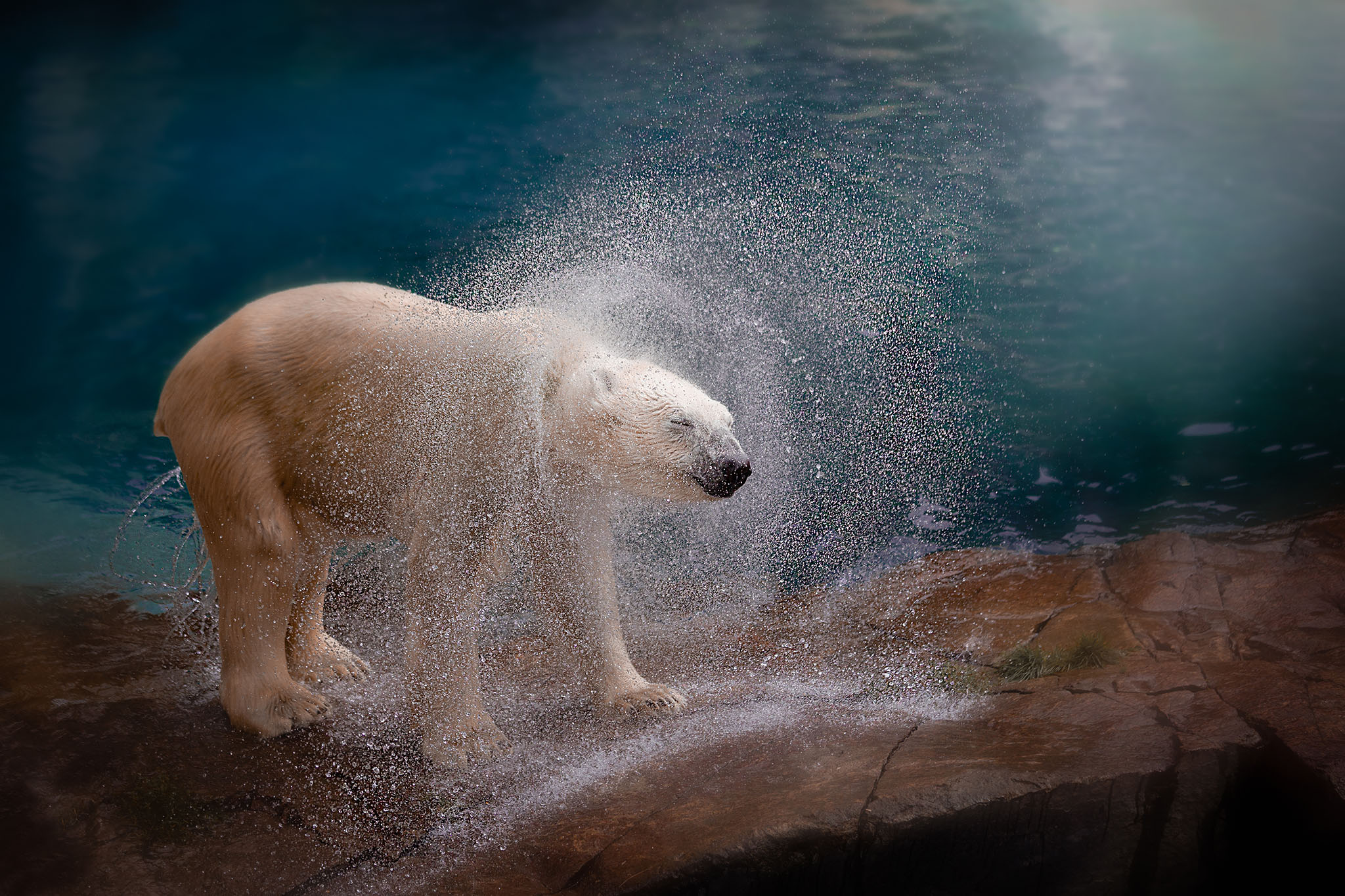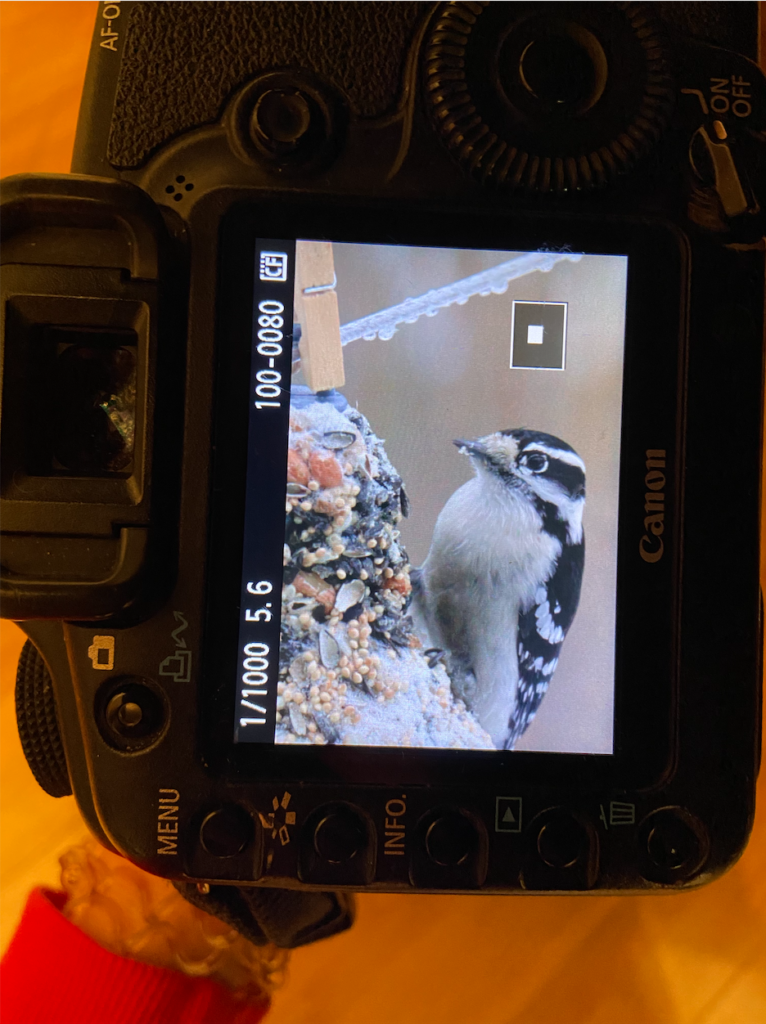Abi Coop
Melissa Richard
Kristen Ryan
Intro to Wildlife Photography | by Elodie Meyer
April 5, 2022
Intro to Wildlife Photography
In this post, we are going to dive into an intro to wildlife photography! Ever wonder how to get a good portrait of a squirrel or bird, but it’s always blurry or out-of-focus?

There are so many things that I want to share with you: the light, the animals behaviors, how to respect wildlife, what makes a good photo, … But in order to go to these oh-so-interesting topics, we need first to go back to the fundamental principle of photography, which is the following triangle:

If the 3 are in equilibrium, then the light is good enough and you have a photo.
Want to learn more about the exposure triangle? Check out Goodbye Auto. Hello Manual.
What about ISO?
ISO is the easy guy here. Depending on the light outside, usually you can gravitate towards a 400-800 ISO, and bumping it up if it’s dark and very cloudy: I sometimes need to go to ISO 1000 or ISO 2000 to make sure my image are properly exposed.

Let’s talk about shutter speed!
Yep, those animals are damn fast, so keep in mind that you need a fast enough shutter speed to freeze them in their movement.But how fast? Well, it depends on the creature you’re photographing and if they are in motion themselves. Start by 1/250s or 1/500s and go faster if needed, sometimes even 1/2000 s is not enough for a flying bird.

Last but not least… aperture!
Most wildlife photographers shoot in aperture mode. Let me explain. You can control your shutter speed by increasing or decreasing your aperture, as per the fundamental principle of photography.
For instance, here are the settings possible on my camera and my go-to 70-200 mm lens:

If you choose f-7.1 and 1/250th of a second, and you see it’s not fast enough, you can wider your aperture (going from f-7.1 to f-6.3) which will increase your shutter speed to 1/320th of a second.

Now why do we use aperture mode? Because it allows us to get a nicely exposed image of those fast and little creatures more easily, but I am still in control of most of my parameters. And the third parameter being the ISO, yes, I can still bump up the ISO if I want a higher shutter speed.
For instance if I have f-7.1 and 1/250th of a second and ISO 400, I could bump up to ISO 500 to get 1/320th of a second for shutter speed.

So now you’re all happy and are equipped to have a properly exposed image!
… but (sorry there’s a but) … have a double look at your aperture and your lens!
Because yeah, life is not so easy in that case, you know that your depth of field is linked to the length of your lens and your aperture. And what do we usually use when we want to photograph little and shy animals? A big zoom, a tele-objective or basically the lengthiest focal lens you have (usually a good start is something between 200mm and 400mm). Or a macro lens if you’re into insects photos. OK, let’s pause a minute, if you didn’t drink your coffee yet, now would be a good time for it.

If I shoot a bunny (with my camera I mean) which is 10 meters away, with a 150mm focal lens, at f-5.6, lets see what happens:

Now I think, let’s bring in the big artillery and shoot with a 600mm with the same conditions:

See what happens? In order to have Mighty Bunny in complete focus with the right depth of field, you need to be aware of the depth of field.

If you’re a Hello Storyteller subscriber, you’ll receive this month as a perk an easy way of calculating the depth of field to ensure your image are always in focus!
Anything else you need to worry about?
I would recommend to use continuous autofocus (choose a single point of focus and continuous focus mode), because you’ve seen how many parameters you already have to think about, so let’s not worry about achieving a manual focus here. And as animals are fast, I would recommend continuous shooting on your camera.If you have a IS button (image stabilization) on your lens, now you also be a good time to use it, you can usually find one on the long lenses, it helps with the blur.

One last tip… this one is super duper important!

Take 2-3 photos and then check them on your LCD screen: you can assess if the photo is not blurry and usually you can zoom in and check if your focus was good, allowing you to adapt your parameters if needed.
What’s Next?
I hope you enjoyed this intro to wildlife photography! Now that you have the basics, you can practice, practice, practice! And then come back next month for my next blog post about what important to prepare for your next outing of shooting animals in the wild.
